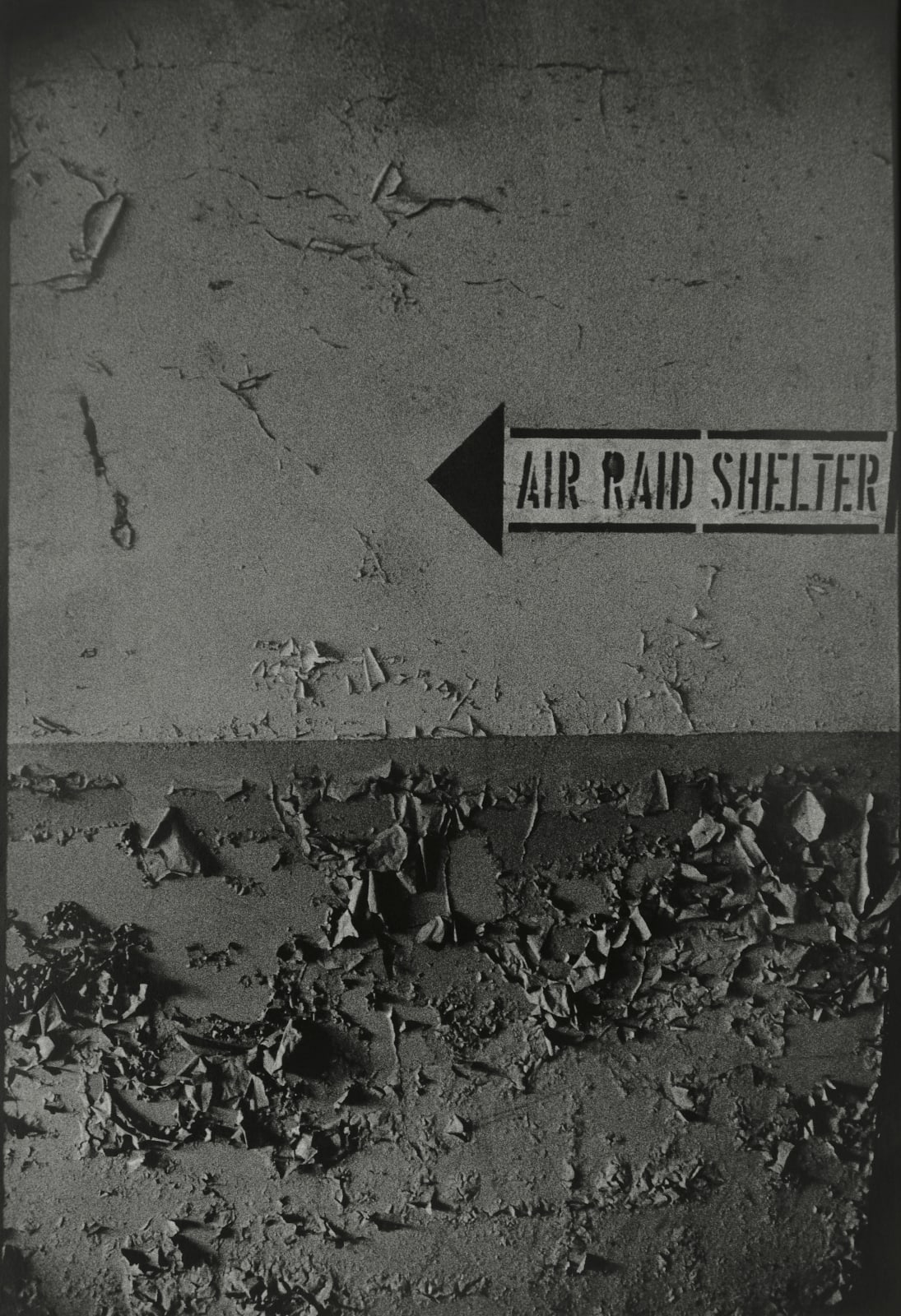-


Ishiuchi Miyako
Bay Side Courts, Wall No.3. 1988-1989Vintage silver gelatin print
Printed by the artist in 199143 x 35.3 cmSigned, titled and dated on verso in pencilLiterature
Biography:
Ishiuchi Miyako (b. 1947) began her photographic career shooting familiar streets and buildings in her hometown, Yokosuka, which had been transformed during the post-war period into one of the largest American naval bases in the Pacific. For over ten years, Ishiuchi documented this alien presence, capturing traces of the Occupation that lingered decades after the war had ended, and charging her work with a subjectivity which blended personal and political awareness.
Ishiuchi was immersed as a student in the radical political climate of Tokyo at the end of the 1960s. Contemporary identity politics and debates surrounding self-expression encouraged Ishiuchi to reflect upon her fraught relationship with Yokosuka, and in 1976 she returned to the town she has characterized as a place of fear, grief, resentment, and disorientation. Although Ishiuchi is only physically represented in these early series once, as a shadow, she has commented that these photo books, concerned with Yokosuka and its history, are “totally personal […] My very own skin, born in the darkroom.”
For Ishiuchi, the physical process of creating prints, which she taught herself by experimenting in a dark room she set up at home, is of critical significance. Her coarse-grained, monochrome style from this period has been compared to the are-bure-boke ('rough, blurred, out of focus') style popularised by Daidō Moriyama. This distinctive aesthetic was praised by her mentor Tōmatsu Shōmei, and has been celebrated in numerous exhibitions in her home country, and internationally, at institutions including Tate Modern, ICP and MoMA.
More recently, Ishiuchi’s work has continued to record material traces of the passage of time, turning her lens away from locations towards the bodies and personal belongings of people. Her series Mother’s (2002), in which she documented her mother’s possessions as a means of coming to terms with her death, was selected to represent Japan at the 2005 Venice Biennale. This led the Hiroshima Peace Memorial Museum to invite her to capture everyday objects which had belonged to victims of the atomic bomb. The Museo Frida Kahlo commissioned Ishiuchi to photograph Kahlo’s possessions, held in the museum archive (Frida, 2013). Ishiuchi has been the subject of solo retrospectives at the Getty and the Yokohama Museum of Art. Her accolades include the Kimura Ihei Memorial Photographic Award, the 50th Mainichi Art Award, and the Hasselblad Award.



